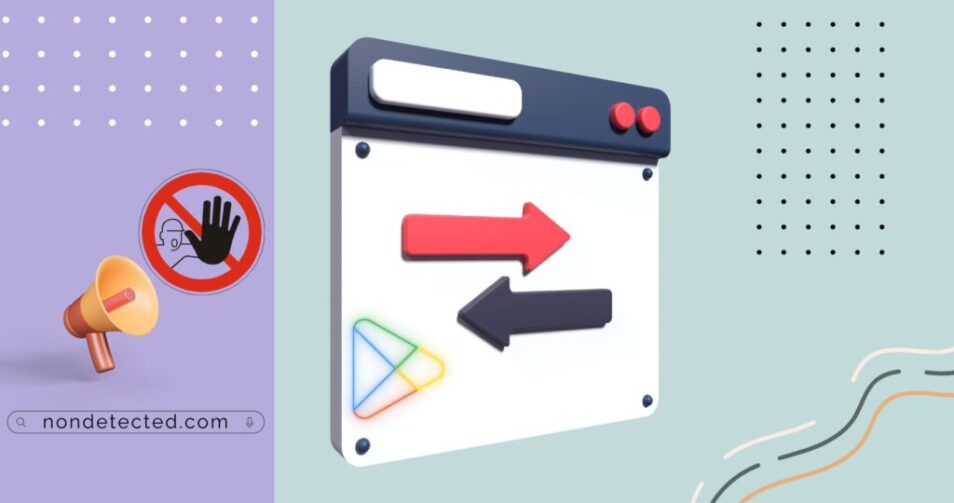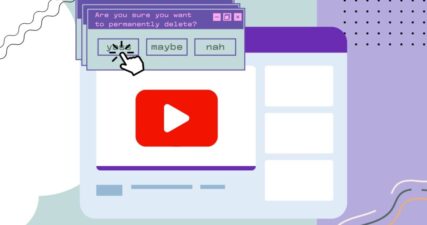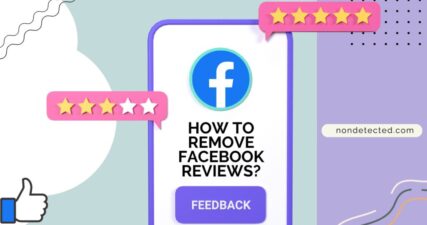Google Copyright Removal: An Expert’s Guide to Safeguarding Your Content

If you’re reading this, you’re probably concerned about copyright infringement, especially in the vast realm of the internet. Trust me, I’ve been there. That was one of the reasons I decided to work in this field, actually.
As a seasoned professional in online reputation management at NonDetected, I’ve seen my fair share of copyright woes.
And today, I’m here to share my expertise on how to remove copyright infringement from Google.
Let’s begin!
Table of Contents
- Copyright Infringement: The Basics and Beyond
- Google’s Stance on Copyright Infringement
- Steps on How to Remove Copyright Infringement from Google
- Real-life Examples: The Proof in the Pudding
- Additional Considerations for a Successful Report
- What Happens After Reporting
- Addressing Wrongful Takedowns
- Reporting Copyright Infringement on Websites
- Additional Resources and Tools
- In Conclusion
Copyright Infringement: The Basics and Beyond
In my opinion, understanding copyright infringement is the first step to addressing it. So, what is it?
Definition
Copyright infringement occurs when someone uses copyrighted content without the necessary permissions. Think of it as someone taking your hard work and passing it off as their own.
Real-world implications
As I’ve observed over the years, businesses and individuals alike suffer when their own data and content is stolen. It’s not just about lost revenue; it’s about the erosion of brand trust and authenticity.
Digital Millennium Copyright Act (DMCA)
The Digital Millennium Copyright Act (DMCA) is a beacon of hope in this scenario. Established to address copyright issues in the digital age, it provides a framework for copyright owners to report infringements and seek redress.
Google’s Stance on Copyright Infringement
Google, being the giant it is in the search realm, has a process in place for copyright removal.
Here’s how you can steer it:
Google’s Compliance with DMCA
Google takes copyright infringement seriously. They’ve set up mechanisms to ensure that they comply with the DMCA, ensuring that infringing content is delisted from search results once a valid report is made.
Trademark Violation
While the following steps focus on addressing copyright infringements, it’s equally important to recognize and act upon trademark violations. Misuse of trademarks can harm a brand’s reputation and cause consumer confusion. Google provides mechanisms to report such infringements, ensuring that trademark rights are upheld.
Difference Between Removing from Search Results and Actual Websites
It’s crucial to understand that Google can only remove content from its search results. The infringing material still exists on the website. This is why, in my experience, it’s essential to approach the website owner directly for complete removal of copyrighted materials.
Filing a takedown notice can be straightforward—but only if the details are filled out properly. If you’re unsure where to start, there are services that assist with submitting DMCA requests and help make sure everything is handled according to the legal process.
Steps on How to Remove Copyright Infringement from Google

Let’s break down the process of reporting infringement data to Google in a detailed step-by-step guide:
Step 1: Preparation
Before You Begin:
- Ensure you have a Google account. If you don’t have one, head over to the Google account creation page and sign up. This account is essential as it’s your gateway to accessing Google’s tools, including the copyright removal tool.
Step 2: Accessing the DMCA Takedown Notice Form
- Navigate to Google’s DMCA takedown notice web form. This is where you’ll be submitting your copyright infringement report.
- As I always emphasize to my peers, bookmark this page. If you’re in the business of content creation, it’s a handy link to have at your fingertips.
Step 3: Filling Out the Form
This is the crucial part. Accuracy is key here.
Contact Information:
- Full Name: Enter your full name. If you’re representing a company, include your title.
- Company Name: If applicable, enter the name of the company or organization you’re representing.
- Email Address: Provide a valid email address. This is where Google will send updates and notifications regarding your request.
- Physical Address, Phone Number, & Fax: While these might seem excessive, they’re essential for verification purposes.
Description of the Copyrighted Work:
- Be specific here. Describe the nature of the copyrighted work. For instance, is it an article, an image, maybe a long time no see video of a specific character, or a piece of music?
- If possible, provide any registration numbers or additional details that can help verify the authenticity of your claim.
URLs:
- Authorized URL: Provide the link where the original content can be found. This helps Google verify the legitimacy of the content.
- Infringing URLs: List all the URLs where the infringing material is located. Ensure you’re thorough. If there are multiple instances of infringement across different pages of a website, list them all.
Step 4: Additional Details
There’s a section in the form where you can add additional comments or details. In my opinion, use this space to provide any context or background information that might be relevant. For instance, if you’ve already tried contacting the website owner with no success, mention it here.
Step 5: Review and Submit
- Before hitting that ‘Submit’ button, double-check all the information you’ve entered. Ensure there are no typos or errors.
- Once you’re confident everything is accurate, go ahead and submit the form.
In my experience, the more detailed and accurate you are in this process, the smoother it goes. Google values authenticity and accuracy, so ensure you provide all the necessary details to make the process seamless.
Sometimes, even after taking down the original content, the link stays active in search results. If that’s the case, support is available to help request removal of those outdated search results so they no longer show up when someone searches your name or brand.
Real-life Examples: The Proof in the Pudding
To drive my point home, let’s look at some real-life examples:
News Site Woes
A friend of mine, who runs a popular news site, once found chunks of his articles copied verbatim on another website. By following the steps I’ve outlined above, he was able to get the stolen content removed from Google’s search results.
The Case of Stolen Art
An artist I know discovered her artwork being sold as prints on an infringing website. With a clear understanding of the DMCA and Google’s copyright and removal request process, she was able to report the infringement and get the infringing online content delisted from Google search.
Additional Considerations for a Successful Report
From my extensive experience in online reputation management, I’ve picked up a few tricks of the trade. When reporting copyright infringement to Google, always double-check your details. A small oversight can delay the process.
Additionally, always keep a backup of the infringing file or material. It’s a good practice to have evidence on hand, especially if there are further disputes.
What Happens After Reporting

Once you’ve done your part, the ball is in Google’s court. Here’s what typically happens:
Google’s Review Process
Google has a dedicated team that reviews DMCA takedown notices. They assess the validity of the claim submitted and ensure that all provided information is accurate.
Average Processing Time
As I’ve seen with numerous cases, Google is relatively swift. On average, they process requests within 6 hours. However, depending on the complexity, it might take longer.
Notifications and Updates
Google keeps you in the loop. You’ll receive notifications about the status of your request. Any questions or other requests or clarifications needed will be communicated.
The Significance of the Removals Dashboard
This is a gem! The Removals Dashboard provides real-time updates on your report’s status. It’s your go-to place to track progress.
Addressing Wrongful Takedowns
Mistakes happen. Sometimes content is wrongfully taken down.
- Erroneous Takedown Notices: There are instances where content is mistakenly flagged as infringing. It’s essential to be aware of this.
- Contesting a Wrongful Takedown: If you believe your content was wrongfully taken down, you have the right to contest it. Google provides a mechanism for this, ensuring fairness in the process.
I recall a case where a blogger’s original content was taken down due to a wrongful claim submitted by a competitor. By contesting the takedown notice and providing evidence of originality, the content was restored.
Reporting Copyright Infringement on Websites
Google is just the tip of the iceberg.
Approaching the Hosting Website
In my opinion, it’s crucial for users to approach the website hosting the infringing content directly. While Google can delist it from search results, the content still exists online.
Common Platforms and DMCA Compliance
Platforms like WordPress, Wix, and Shopify comply with DMCA. They have mechanisms to report and address copyright infringement.
Communicating with Website Administrators
Always be clear and polite. Provide evidence of the infringement and request a takedown. Most administrators cooperate with takedown request once they’re made aware.
Additional Resources and Tools
Knowledge is power. Here are some resources to arm yourself:
- Google’s Transparency Reports: These reports provide insights into the volume of takedown requests Google receives and processes.
- Third-party Services: There are services out there, like NonDetected, that assist in content removal. They can be invaluable, especially in complex cases.
- Legal Avenues: There’s always the legal route if all else fails. Consulting with an attorney specializing in intellectual property can provide clarity and direction.
In Conclusion
The internet is vast, and while it offers numerous opportunities, it also comes with challenges like copyright infringement. But, as I know from the best experts in the niche, with the right knowledge and tools, you can safeguard your YouTube video or other types of content content.
Remember, it’s not just about removing content; it’s about standing up for your rights and ensuring the digital space remains fair and authentic
If you ever find yourself grappling with these copyright law or other issues, take a deep breath, arm yourself with knowledge, and tackle it head-on. And if you ever need expert advice or assistance, you know where to find us!


